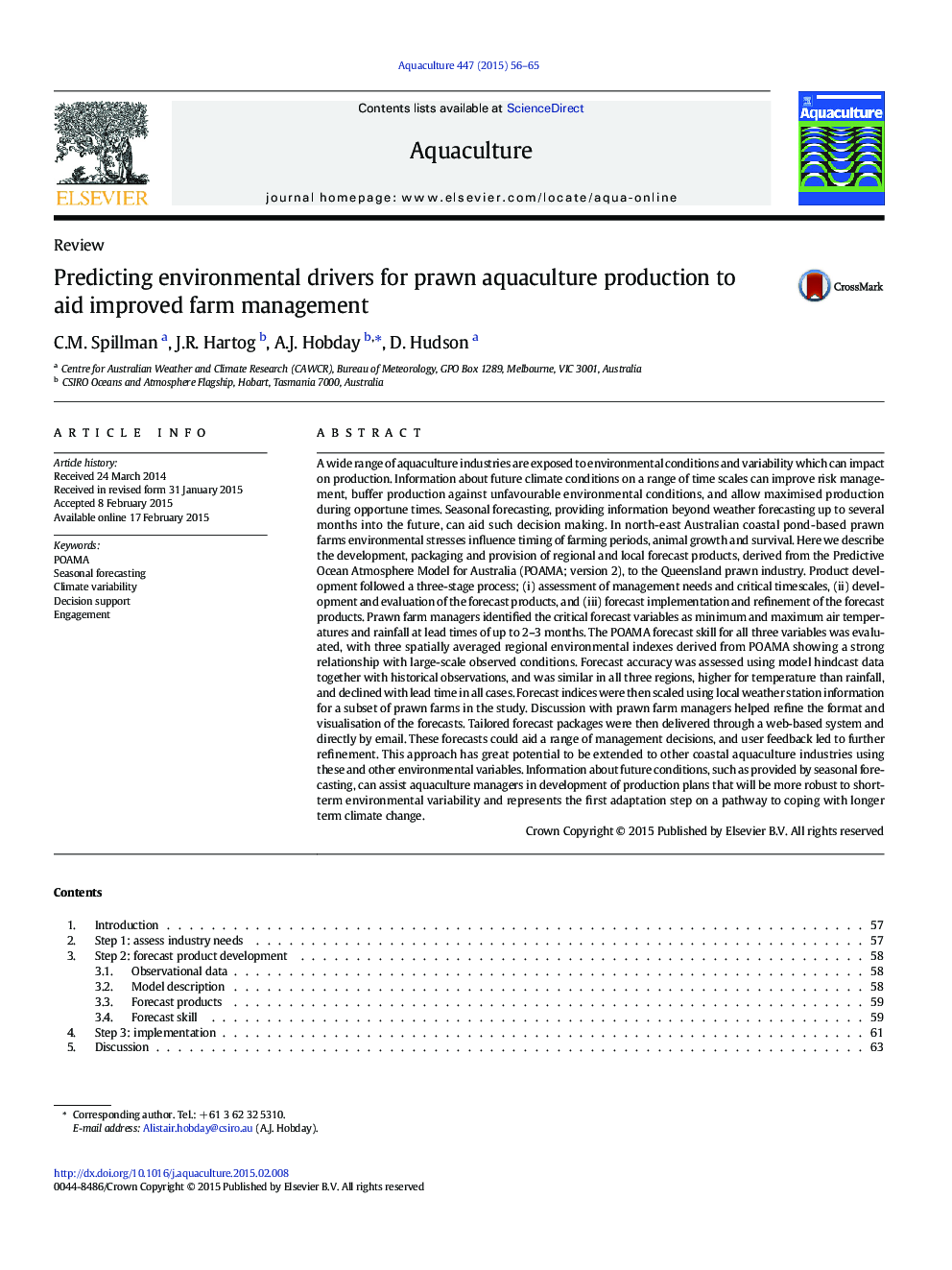| کد مقاله | کد نشریه | سال انتشار | مقاله انگلیسی | نسخه تمام متن |
|---|---|---|---|---|
| 2421591 | 1552840 | 2015 | 10 صفحه PDF | دانلود رایگان |
• We provide the first example of targeted seasonal forecasts for air temperature and rainfall to support Australian prawn farm managers.
• These forecasts, based on an operational forecasting model, POAMA, were useful out to lead times of 2 months.
• A range of decisions can be supported by forecasts and improve farm business performance in the face of climate variability and change
A wide range of aquaculture industries are exposed to environmental conditions and variability which can impact on production. Information about future climate conditions on a range of time scales can improve risk management, buffer production against unfavourable environmental conditions, and allow maximised production during opportune times. Seasonal forecasting, providing information beyond weather forecasting up to several months into the future, can aid such decision making. In north-east Australian coastal pond-based prawn farms environmental stresses influence timing of farming periods, animal growth and survival. Here we describe the development, packaging and provision of regional and local forecast products, derived from the Predictive Ocean Atmosphere Model for Australia (POAMA; version 2), to the Queensland prawn industry. Product development followed a three-stage process; (i) assessment of management needs and critical timescales, (ii) development and evaluation of the forecast products, and (iii) forecast implementation and refinement of the forecast products. Prawn farm managers identified the critical forecast variables as minimum and maximum air temperatures and rainfall at lead times of up to 2–3 months. The POAMA forecast skill for all three variables was evaluated, with three spatially averaged regional environmental indexes derived from POAMA showing a strong relationship with large-scale observed conditions. Forecast accuracy was assessed using model hindcast data together with historical observations, and was similar in all three regions, higher for temperature than rainfall, and declined with lead time in all cases. Forecast indices were then scaled using local weather station information for a subset of prawn farms in the study. Discussion with prawn farm managers helped refine the format and visualisation of the forecasts. Tailored forecast packages were then delivered through a web-based system and directly by email. These forecasts could aid a range of management decisions, and user feedback led to further refinement. This approach has great potential to be extended to other coastal aquaculture industries using these and other environmental variables. Information about future conditions, such as provided by seasonal forecasting, can assist aquaculture managers in development of production plans that will be more robust to short-term environmental variability and represents the first adaptation step on a pathway to coping with longer term climate change.
Journal: Aquaculture - Volume 447, 1 October 2015, Pages 56–65
